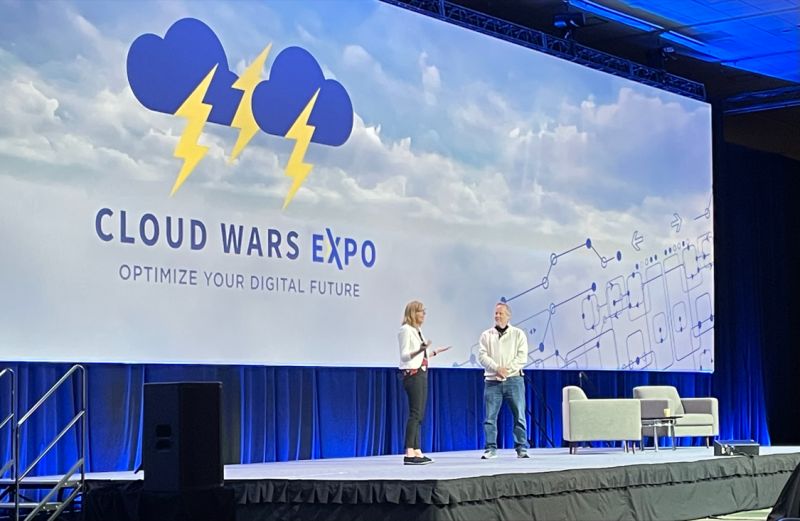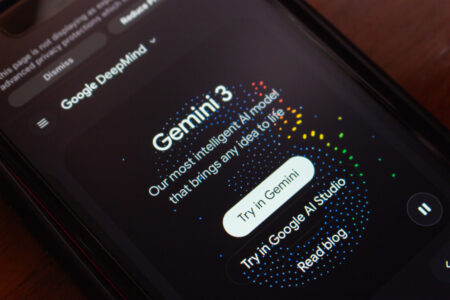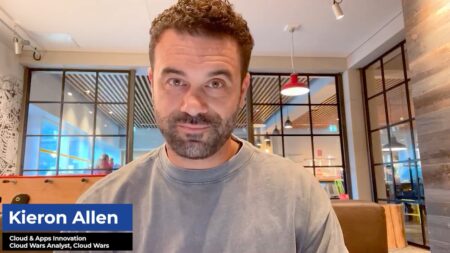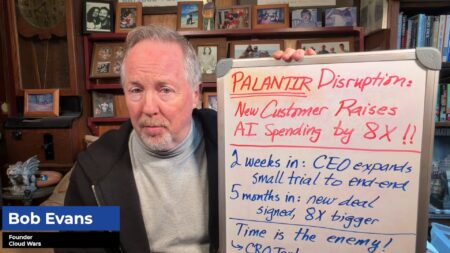The second day of Cloud Wars Expo, taking place in San Francisco’s Moscone Center this week, was filled with insights, ideas, and inspiration to help CXOs and other business leaders drive growth and reimagine their businesses. Day Two’s onstage keynotes and fireside chats with Cloud Wars Founder Bob Evans and various guests delivered fresh insights on sustainability, supply chains, post-pandemic business strategies, and customer centricity. Here are some of the highlights.
Microsoft Sustainability Keynote: Rosie Mastrandrea
Addressing the sustainability opportunity, Microsoft Senior Director of Sustainability Product Marketing Rosie Mastrandrea noted a lot of companies think that sustainability can detract from financial results. “That’s really not the case. This is an opportunity to transform and rethink business processes. We’ve had a ton of innovation happening” at Microsoft as a result of sustainability initiatives, Mastrandrea says. Everyone recognizes that technology and innovation will have to be leveraged to meet sustainability goals, especially when you think about not just reducing carbon but removing it. “It’s an enormous economic opportunity for business.”
Microsoft Cloud for Sustainability is unlike industry clouds for retail or energy or pharmaceuticals; sustainability cloud is horizontal, spanning all industries and getting integrated into all business processes. In retail, it can help with circularity, in energy it can support the transition to clean energy, and so on. It presents an opportunity to create new value in every part of the business, she said.
Per Mastrandrea, the top focus areas of Microsoft Cloud for Sustainability are:
- Delivering data intelligence: Providing data and transparency across the value chain for internal and external reporting.
- Building sustainable IT infrastructure: Moving to the cloud can reduce the environmental footprint of workloads by over 90%.
- Reducing the environmental impact of operations in areas including buildings, energy, and transportation by pulling together an ecosystem of solutions.
- Creating sustainable value chains by pulling together disparate sources into a ‘data estate,’ then applying business intelligence, artificial intelligence, and machine learning on top of the data estate to derive the greatest insights.
Fireside Chat: Berkeley Professor Luyi Yang
Berkeley Haas professor Luyi Yang sat down with Cloud Wars founder Bob Evans and discussed ways that supply chain leaders can improve the current highly-disrupted state of supply chains. He offered three suggestions:

- Bring production and warehousing back to the home country or closer to end markets, moving away from offshoring that put production sites far from their end markets in favor of lower costs.
- Take a supply network perspective, as opposed to a supply chain perspective, and build in additional suppliers instead of overly relying on a single supplier.
- Prepare for a rainy day with additional inventory for unexpected demand.
Asked about the potential cost impact of these changes, and potential pushback, Yang noted that companies need to digitize supply chains to lower their cost, and long-term gains sometimes require short-term investments.
Yang noted that cloud computing, along with artificial intelligence (AI)/machine learning (ML), needs to be a big factor in improving supply chains. He said more accurate demand forecasting requires highly scalable computing resources — and those are only available via the cloud. “If you only have the data stored locally, you probably won’t have all the computing resources to actually run those sophisticated AI/ML and data mining models,” Yang said, adding “cloud computing can facilitate information sharing between different parties along the supply chain” for greater efficiency.
Fireside Chat: Goya Foods CIO Suvajit Basu
When developing or building technology for Goya Foods, Basu’s approach is to acquire technology built by vendors and implement it as quickly as possible, rather than focusing on internal development. His emphasis is on creating great relationships with the companies’ vendor partners.
When the pandemic hit in March 2020, the company saw four months of food supply sell out in a couple of days. Even with vast amounts of demand planning, inventory management and replenishment systems in use across the economy, companies still could not predict the types of spikes that were experienced. GOYA has seen prices for goods in some cases increase up to 10 times.
“Old data almost has no value” as demonstrated during the pandemic.
Suvajit Basu, CIO, Goya Foods
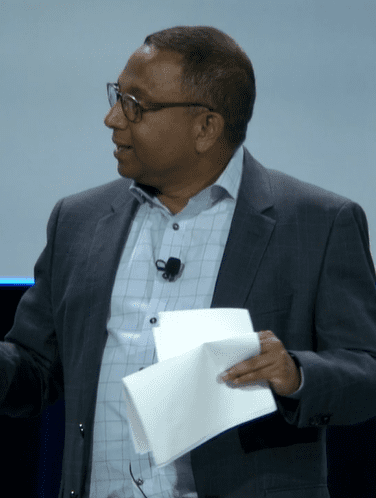
Basu noted the importance of timely data and said data loses value very quickly today as it ages: “Old data almost has no value,” as demonstrated during the pandemic, he said.
Basu went into the office every day during the pandemic. “As leaders — captains of the ship — I wanted to be on board.”
Fireside Chat: Cirque du Soleil VP of IT Philippe Lalumiere
Post-pandemic, after 95% of employees were furloughed, the Canadian entertainment company went through big challenges to get up and running again. SAP ERP was instrumental in helping. Cirque du Soleil uses materials management, production planning, sales and distribution, financial accounting, and other SAP apps. “Not too many ERPs can support the complexity of our reality,” Lalumiere, said referring to the company, which operates several live circus shows in Las Vegas, annual tours across the globe, and all aspects of the business from food and beverage to ticketing to global recruiting.
The company’s focus is to avoid having customers see everything that goes into its onsite experience, and its applications are key to making that possible. “We want you to be awed, dazzled. Our goal is to make you happy if only for an hour and a half or two hours,” Lalumiere said.
“We want you to be awed, dazzled. Our goal is to make you happy, if only for an hour and a half or two hours.”
Philippe Lalumiere, VP of IT at Cirque du Soleil
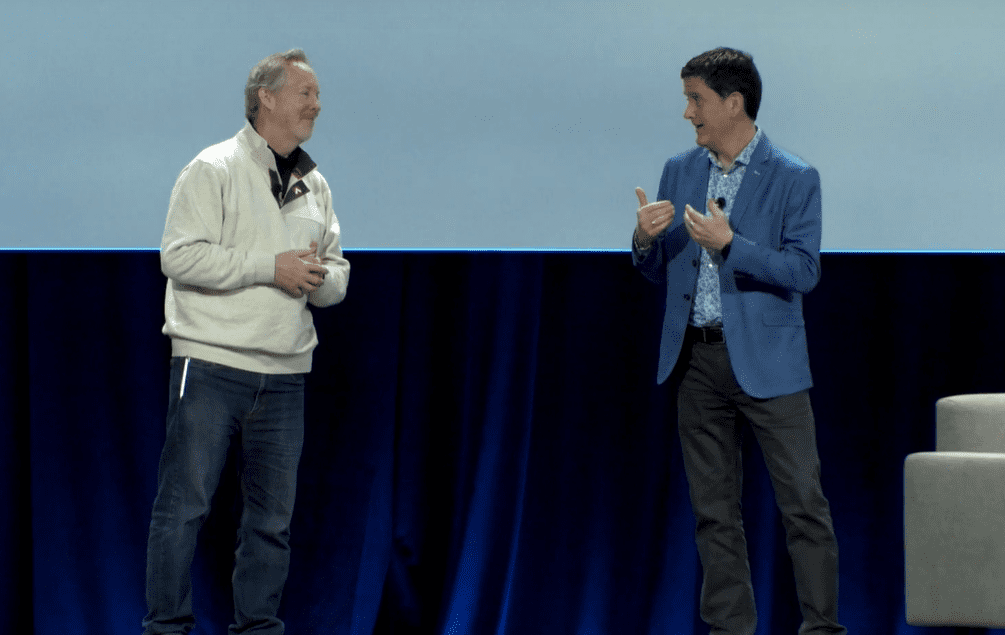
Cirque is exploring digital technologies and the metaverse to help enhance customer engagement beyond live shows. “Can we use the metaverse to bring people to see a virtual show? It’s not the same as the live experience because it’s difficult to recreate that. We are looking into using digital to bring that connection even further,” he said.
In other tech initiatives, Cirque is exploring facial recognition to capture audience members’ emotions and reactions to different aspects of a show, such as what and how many objects a juggler juggles. This would allow testing of different experiences and better understand fans in order to deliver more captivating entertainment. These are all part of a customer-focused, digital transformation the company is undergoing.
Fireside Chat: U. Michigan Professor Venkat Ramaswamy
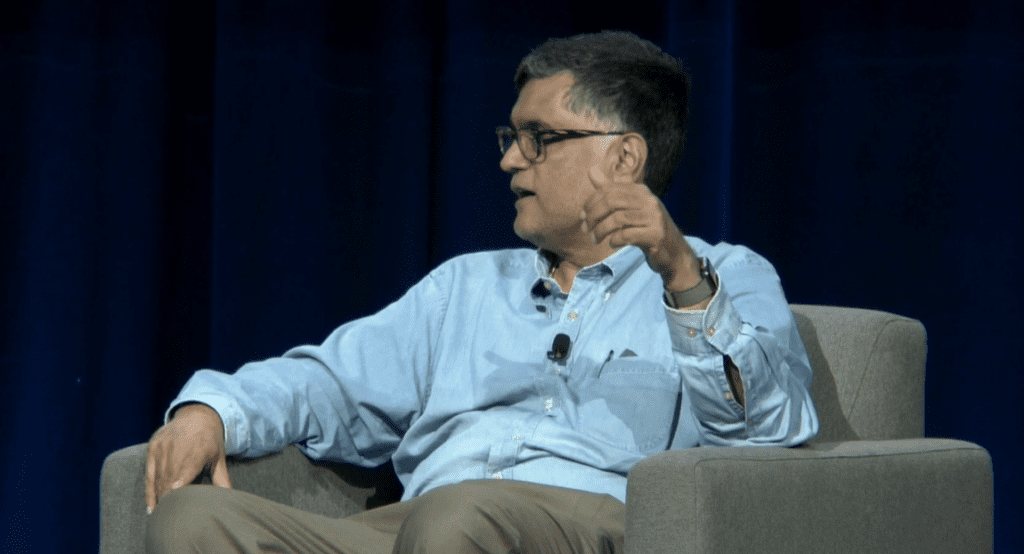
Discussing co-creation with customers, Ramaswamy said companies have come to recognize gaps within companies created by organizational silos. This means when they want to co-create with employees or customers, various departments need to interact with each other and with customers and employees. “Smart companies are understanding the best way to design experiences is to co-create,” Ramaswamy said. “They have to start using tools to help a worker visualize how the experience might change.” Organizational structures and interactions need to be set up to facilitate such interactions, instead of impeding them.


